 From the Desk of Gus Mueller
From the Desk of Gus Mueller
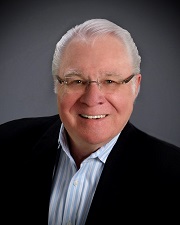
If you live in a rural or even semi-rural area, I'm betting there's a good chance that you have a friend or relative who has a noise-induced hearing loss from recreational firearms. These are people who incur the continued blast from a rifle or shotgun during hunting or target shooting year after year. When you have states, and there are many of them, where over 20% of the residents have a hunting license, the probability that the overall population will obtain a hearing loss from firearms is much greater than from the other noise sources that we commonly read about. Ask any clinical audiologist who works in these areas, and they will tell you that it’s pretty rare to see a male patient over the age of 60 (or maybe even younger), who doesn’t have a noise-induced loss. And, this is not just about adults. While we are hounding 10-year-old Johnny about the loud music blasting from his iPhone, we should also be talking about the danger of hearing damage from the air rifle he got for Christmas.
What I'm saying is that I think we all need to focus a little more on getting the word out regarding the potential of hearing loss from this hobby, and that's what we’re going to do this month here at 20Q. Our guest author is Deanna Meinke, PhD.
Dr. Meinke is Professor in the Audiology and Speech-Language Sciences program at the University of Northern Colorado. She is actively involved in the mentoring and training of the UNCO AuD students, as well as directing her own research lab. Dr. Meinke is the past president of the National Hearing Conservation Association and the Colorado Academy of Audiology (of which she was a founder; steadfastly claiming to be the first state AAA organization!).
Presently, she chairs the National Institute for Occupational Safety and Health (NIOSH) “Safe-in-Sound Expert Committee” and is a consultant to the World Health Organization. She also serves as Co-Director of the Dangerous Decibels® program, which has led to many international collaborations with colleagues in the delivery of Dangerous Decibels® educator training workshops around the world.
As you can tell, Deanna is actively involved in many great organizations, but there is still one more—the “Rudyard Gang.” You can read about some of the research results of the Gang in her excellent article, and get the backstory in an addendum at the end.
Dr. Meinke is Professor in the Audiology and Speech-Language Sciences program at the University of Northern Colorado. She is actively involved in the mentoring and training of the UNC AuD students, as well as directing her own research lab. Dr. Meinke is the past president of the National Hearing Conservation Association and the Colorado Academy of Audiology (of which she was a founder; steadfastly claiming to be the first state AAA organization!).
Presently, she chairs the National Institute for Occupational Safety and Health (NIOSH) “Safe-in-Sound Expert Committee” and is a consultant to the World Health Organization. She also serves as Co-Director of the Dangerous Decibels® program, which has led to many international collaborations with colleagues in the delivery of Dangerous Decibels® educator training workshops around the world.
As you can tell, Deanna is actively involved in many great organizations, but there is still one more—the “Rudyard Gang.” You can read about some of the research results of the Gang in her excellent article, and get the backstory in an addendum at the end.
Gus Mueller, PhD
Contributing Editor
March 2017
Browse the complete collection of 20Q with Gus Mueller CEU articles at www.audiologyonline.com/20Q
20Q: A Shot of Prevention - Hearing Loss from Recreational Firearm Noise
Learning Outcomes
After this course, readers will be able to:
- Describe shooting activities and types of firearms that may put people at risk for hearing loss from noise.
- State the range of peak SPL from firearms and list factors that impact that range.
- Discuss hearing loss caused by noise from firearms, who is at risk, strategies to reduce risk, and how/which hearing protection devices may be effectively used to reduce risk.
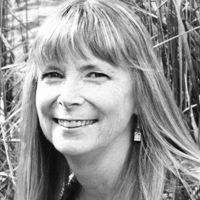
Deanna Meinke
1. Is it common for audiologists to be interested in hearing loss from firearms?
Well, in large parts of the U.S., where hunting is popular, you more or less have to be interested, as this makes up a pretty big chunk of your patient load. I can tell you my story. For starters, I’m married to a hunter with hearing loss. As a clinician working in Colorado, I saw many patients who used firearms for recreation. I realized that as an audiologist, I wasn’t prepared to speak their language, answer their questions or advise them. In more recent years, as a researcher, I’ve wanted to provide the evidence-based answers to some of the practical questions that often are posed to clinicians. Otherwise, I was just blindly “shooting from the hip.”
2. I see what you did there. Are there really a lot of people who shoot recreational firearms?
It may be more common than you think. Approximately 46% of adult males and 13% of adult females reported firing a gun at some point in their lifetime on the 2007 U.S. National Health Interview Survey. In 2015, 14.8 million hunters purchased permits, according to the U.S. Fish and Wildlife Service, and, in 2010, 1.7 million youths were hunters (Families Afield, 2010). Over 20 million Americans used firearms in target-shooting related activities in 2011 (Southwick Associates, 2013). Men, women and children all shoot for fun or sport.
3. What other kinds of shooting activities besides hunting are there?
Well, if you have the urge to travel back in time, “Cowboy Action Shooting” involves target shooting matches that are held in locations that resemble an Old West town from the mid to late 1800’s. The competitors are dressed in costumes and use rifles, shotguns and pistols from the era. Other historical reenactment groups may utilize firearms from civil or revolutionary war eras. Competitive skeet/trap shooting, dog field trials, trick shooting and target shooting events are common. Youth often participate in shooting events as part of a wildlife conservation group or youth group shooting activities (e.g. 4-H, National Wild Turkey Federation, Pheasants Forever, and Ducks Unlimited). Large multi-day machine gun shooting events are attended by hundreds and as many as 3.5 million rounds may be fired over the course of the event (e.g. Big Sandy Shoot). Athletic sports officials use a starter pistol to signal the start of an event or mark the stage of competition (e.g. last lap in track and field).
4. So, we are talking big numbers of people exposed. Let’s get to the acoustics. Tell me about the “bang”?
The “bang” is actually the result of a chain of events that result in an extremely brief (<10 ms) high frequency impulse waveform that is perceived by the human ear as a single “shot”. It starts with the firing pin hitting the cartridge, which detonates the primer, which then burns the gunpowder. This produces a large volume of gas that builds up pressure and accelerates the bullet (or other projectile) down the barrel of the gun and out the muzzle. If the bullet is traveling at supersonic speed, it will produce a conical shock wave (sonic boom) that expands outward from the location of the bullet tip, sort of like the wake produced by a motorboat in water. Another sound source is the spherical blast wave produced when the hot compressed gases are released, which creates a turbulent airflow around and in front of the muzzle. Rifles and pistols use bullets as the projectile, whereas shotguns use cartridges comprised of a plastic case with a brass base that holds the primer, gunpowder and small metal pellet projectiles (shot). A shotgun can also shoot a single projectile called a “slug” or “sabot” (Figure 1). A blank is a cartridge that only contains gunpowder and no bullet or shot pellets. An air rifle uses compressed air or liquefied gas (CO2) to propel the pellets or BBs.
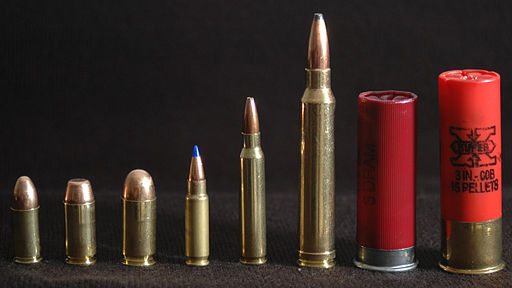
Figure 1. Handgun ammo on the far left, rifle ammo in the center, and two shotgun shells on the far right. Photo by Bobbfwed / Wikimedia Commons / CC-BY-SA-3.0.
5. Some of my patients talk about gauges and calibers of their firearms. What does that mean?
This is a perfect example of speaking the language of recreational firearm users. A general understanding of these terms can help you answer questions accurately and may give you more credibility from the patient perspective. Rifles and pistols are typically referred to in terms of caliber, whereas shotguns are sized in terms of gauge. It can become complicated in terms of the measurement unit (inches versus millimeters) and the classification system used.
The first one is simple: Caliber is the inside diameter of the bore of a firearm barrel measured in inches or millimeters. In general, the lower the number, the smaller the bore of the firearm and the smaller the projectile. For instance, a .22 caliber rifle has a bore diameter that is .22 of an inch, or a 9 mm handgun has an internal diameter of 9 mm.
Gauge is the bore size of a shotgun (28, 20, 16, 12, and 10) and it references a weight-based measurement system. The gauge number is equal to the number of lead balls of that specific bore diameter that will add up to weigh one pound. If the bore diameter is smaller it will take more lead balls to add up to 1 pound. A 20 gauge shotgun has a smaller diameter bore than a 12 gauge shotgun. This is the case except for a .410 shotgun which commonly used by youth, and is really a caliber and not a gauge.
6. We all know a gunshot can harm the ear, but how much sound pressure do they actually generate?
To measure that, we usually position one microphone near the left ear of the shooter, since most shooters are right handed. The peak sound pressure level (SPL) at this location will depend on several factors, one of which is the proximity of the muzzle or gas escape location to the ear. Pistols have shorter barrels than rifles or shotguns and result in high peak levels (Table 1). As you can see, it’s not uncommon to have levels in the 160 to 170 dB range.

Table 1. Mean unweighted peak sound pressure levels for recreational firearms measured at the left ear of a right-handed shooter. Sources: Rasmussen, Flamme, Stewart, Meinke, & Lankford (2009); Flamme, Wong, Liebe, & Lynd (2009); Murphy et al. (2012); Meinke et al. (2013); Meinke et al. (2014); Lankford et al. (2016).
7. Jeepers! I thought the peak sound pressure levels for firearms were only about 140 dB?
Gunshots are often measured with conventional sound level meters which have microphone and electronic circuity limitations for measuring high-level impulses from weapons. If the peak pressure level of the impulse exceeds the dynamic range maxima of the instrument, the lower “clipped” value will be incorrectly reported as the peak SPL. In our research projects, we use specialized hardware and software that is able to capture the rapid rise time and extreme magnitude of the pressure changes. This approach provides us with a high quality impulse recording that allows for detailed resolution of the waveform and analysis techniques to quantify the auditory risk (see Rasmussen, Flamme, Stewart, Meinke, & Lankford, 2009 for a description).
We recently compared rifle gunshot peak sound pressure levels from four commercial sound level meter models marketed specially for impulse noise measurements to our gold-standard research measurement system. We found that the sound level meters report values for firearms that may underestimate auditory hazard for impulse sound levels at or above approximately 150 dB peak SPL. In the past, “noise thermometers” used for educational purposes have likely referenced the ceiling limit of conventional sound level meters (here is an example). It is time to update our noise thermometers and consistently reference the newer unweighted peak sound pressure levels when communicating the auditory risk from recreational firearms to our patients and the public. A few examples of updated noise thermometers can be found at:
- 3M: https://multimedia.3m.com/mws/media/1074386O/decibel-scale-noise-meter.JPG
- Dangerous Decibels®: https://dangerousdecibels.org/education/information-center/decibel-exposure-time-guidelines/
- Howard Leight: https://www.howardleight.com/hearing-protection/noise-thermometer
8. You mentioned air rifles. I had one when I was a kid. Are they safe to shoot?
We were curious about this too, especially since youth often start learning to shoot with an air rifle and because of the popularity of air-rifle shooting competitions for children. When I say “we,” I am referring to a group of us who are interested in firearm research, and we have dubbed ourselves the Rudyard Gang. I’ve provided some information about our research group at the end of this article. The Rudyard team measured the peak sound pressure levels from nine pellet air rifles and the infamous Daisy Red Ryder BB gun made popular in A Christmas Story. As shown in Table 1, the peak levels at the left ear ranged from 117-134 dB. The air rifles fit with suppressors were less hazardous than those without suppressors and the pellet air rifles with higher velocities were generally more hazardous than those with lower velocities. None of the air rifles exceeded the 140 dB peak limit for adults, and 80% exceeded the 120 dB peak limit recommended for youth set by the World Health Organization (WHO). Although there is minimal auditory risk for adults shooting air rifles, the use of hearing protection is still encouraged in order to gain self-efficacy and model appropriate hearing health behaviors necessary for recreational firearm use.
9. What about starter pistols shooting blanks? Those would be okay, right?
Probably not. Our starter pistol study demonstrated that shooting blanks from a .22 or .32 pistol outdoors produces more sound at the shooter’s ear than normal open-barrel guns firing either live ammunition or blanks. This may be due to the design of some starter pistol models that permit gases to escape from an open chamber that is positioned even closer to the ear than the muzzle. And, it’s not just the person firing the pistol who is at risk. In a simulated track situation, athletes positioned in the lanes closest to the starter were exposed to above 140 dB peak SPL, and all of the athletes were exposed to peak levels in excess of the 120 peak SPL limit recommended by the World Health Organization for youth. An electronic starting device might be a better choice in this case.
10. Really, it’s not just the person pulling the trigger who is at risk of hearing loss?
That's correct, and if President Reagan could respond, he would agree, since he lost his hearing in his right ear after an actor fired a pistol shooting blanks near his head while filming a movie. Bystanders might be spectators at a shooting event, an instructor, or a family member accompanying a hunter into the field. Back in 2011, our research group published the peak sound pressure levels from 8 rifles, 6 shotguns and 1 pistol for a bystander positioned 1 meter to the left of a right-handed shooter (Flamme, Stewart, Meinke, Lankford, & Rasmussen, 2011). The 10 gauge shotgun firing a 3.5 inch cartridge produced the highest peak SPL (161.4 dB) and a .410 gauge shotgun firing a 3 inch cartridge produced the lowest level (149.1 dB). We recommended that audiologists consider unprotected firearm noise exposure in the clinical evaluation of hearing loss and to include bystanders in hearing loss prevention efforts. These outcomes suggest that clinically, audiologists should move beyond just asking “Do you shoot firearms”, to pose the question “Are you exposed to any firearm noise” during case history taking.
When I accompany my husband to the hunting blind, I definitely make sure I’m wearing hearing protection even though I’m not shooting.
11. How young do kids start using firearms, and what kind of firearms do they use?
Some kids start shooting very young. In a recent survey of Colorado and Michigan youth aged 10-17 years, 57.5% of the youth began shooting by 8 years of age and 78% had taken their first shot before age 10. The majority (73%) of the youth used firearms both for hunting and target-shooting. Contrary to what you might think, these youth do not only shoot small bore firearms, but also the larger bore firearms used by adults. Youth may be more at risk from impulse noise levels due to the potential for higher exposures due to the shorter barrel lengths that are advocated for beginning shooters and the practice of shooting over a bench or tabletop when learning. More troublesome is the report that 62% of the youth never wear hearing protection devices (HPDs) while hunting, and 44% never wear it while target-shooting. Nondahl et al. (2000) published similar patterns of HPD use in adults in which 38% of adult target shooters and 95% of adult hunters report never wearing HPD while shooting in the past year.
12. Why don’t most recreational firearm users wear hearing protection, especially when hunting?
They need to hear. It is as simple as that. They need to hear in order to be safe and successful in their sport. Recreational shooters communicate with others to establish logistical plans, to instruct, and to ensure general safety such as hearing a warning message from a fellow shooter or range-master. The shooter will use their hearing to monitor the firearm assembly and function to determine if it is safe to fire and whether the firing process is completed. When target shooting, the timing and accuracy of the shot is dependent upon hearing the target launch and the successful sound of the projectile hitting the target. Listening demands for hunters are even greater - they need to hear wildlife approaching from a distance and monitor their own body movements during silent approaches. For many shooters, the challenge of hearing is already compromised by their hearing loss.
13. How many shooters have hearing loss?
One of the Rudyard members, Greg Flamme, and colleagues just published some updated U.S. epidemiological hearing data to help answer this question (Hoffman, Dobie, Losconczy, Themann, & Flamme, 2016). Firearm use (recreational, job or military) was reported by 45.7% of the NHANES 2011-2012 cycle of 20-69 year-olds. Of these individuals, 32.6% shot <1000 lifetime rounds and 12.9% shot ≥1000 lifetime rounds. An increased prevalence of bilateral (better-ear) speech frequency hearing impairment (17.3% versus 11.4%) and bilateral (better ear) high-frequency hearing impairment (37.1% versus 25.9%) were related to firearm use. Shooting at least 1000 lifetime rounds significantly increased the risk of speech-frequency hearing impairment in both the better and worse ears (unadjusted odds ratio, 3.7: 95% CI, 1.7-5.7). So, the takeaway is that the more you shoot the more likely you are to have hearing loss.
14. I’ve seen a lot of hunters with hearing loss. Is the configuration of the loss different for people who fire different firearms?
We don’t really know this answer, primarily because most individuals who shoot recreationally, frequently fire more than one type of firearm. It hasn’t been studied directly, but it could be possible to have differences in asymmetry between the ears depending on the configuration of the firearm, as well as shooting position.
15. What other strategies besides taking fewer shots can be used to reduce the risk of hearing loss from recreational firearms?
Several strategies can be considered, and some may more appropriate than others depending on the shooting sport and situation. These first few I’m sure you figured out from our discussion thus far:
- Shoot smaller caliber/gauge firearms when warranted
- Shoot firearms with longer barrel lengths
- Avoid the use of muzzle brakes
- Avoid shooting in groups and increase the distance between shooters
- Avoid shooting over hard reflective surfaces such as benches or tabletops
- Shoot outdoors or in a sound-treated indoor environment that reduces reverberation and reflection
- Shoot sub-sonic or low-velocity (<1120 fps) ammunition when feasible
These next two need further discussion; utilize a suppressor if possible and always wear well-fit earplugs and/or earmuffs when shooting or positioned near others who are shooting.
16. Suppressor? Is that the same thing as a silencer?
They are the same thing. Firearm suppressors are often erroneously called “silencers”—the preferred term is suppressor. A suppressor is a large volume chamber with baffles that is coupled to the muzzle of the firearm. The suppressor functions to reduce the sudden release of pressure from the escaping gases (noise) and diffuse the energy of the blast wave that propels the projectile. The shot is still audible and high peak sound pressure levels are still generated. We recently measured two different rifles (.223 and .308 caliber) using subsonic and supersonic ammunition, with and without a suppressor at three different microphone positions (shooter's right ear, left ear, and instructor position) (Murphy et al., 2016). When supersonic ammunition is used, the unsuppressed peak sound pressure levels were 148-161 dB and were reduced to 120-137 dB when the suppressor was used. Unsuppressed peak SPL ranged from 127-149 dB SPL when shooting the subsonic ammunition and were reduced to 110-132 dB when suppressed. It appears that combining the use of suppressors with subsonic ammunition can further reduce the exposure. It is worth noting that the peak sound pressure levels are not always reduced below 120-140 dB and the marketing claims that suppressors make shooting “safe” without hearing protection are not yet substantiated. Hearing protection use is warranted even when suppressors are utilized.
17. We talked about hearing protection earlier, and I’m now remembering that there are special earplugs just for recreational firearm users?
Yes, there are basically two categories of specialized hearing protectors that were designed to attenuate impulse sound yet afford some degree of audibility - electronic hearing protectors and small-orifice or filtered passive protectors. Both of these rely upon the passive fit of the hearing protector for attenuation performance.
18. Okay, I’m not really too familiar with either so let’s start with the one you’re calling the passive protector.
These devices look like conventional earplugs, however they are vented or contain filters that interact with the high-level impulse signal. The acoustic pressure flow through the orifice becomes more turbulent and provides increased acoustic resistance. This increased resistance does not necessarily always result in adequate attenuation, even when the protectors are properly fit. The degree of protection is also non-linear with increased attenuation evident in some products for higher level impulse signals. The Noise Reduction Rating (NRR) on the package is determined using continuous noise in a laboratory setting and will not accurately represent the actual attenuation performance at high peak levels. Under these laboratory conditions the NRR is negligible (<10 dB) and the consumer and the professional are left misinformed. Some manufacturers may have “impulse peak insertion loss” values measured at more than one high impulse level (~130, ~150 and ~170 dB peak SPL), and may be willing to provide this information if asked. There is an ANSI (S12.42) working group addressing the need to standardize attenuation measurements in hearing protectors designed for impulse noise.
19. What about the hearing protectors with electronics, are they more effective?
The electronic protectors rely upon a power supply and utilize circuity to restore audibility for the wearer when sounds are below approximately 85 dB SPL and limit the long-term average output level to 82-85 dB SPL. They come in a variety of styles including; circumaural earmuffs, universal-fit insert earplugs, custom-fit earplugs and behind-the-ear devices connected to a probed earplug. Some devices provide an option for amplification of low-level sounds and may be highly advantageous for hearing-impaired sport shooters and for hunters to hear approaching game. It is not the circuitry that provides the protection, it is too slow to respond to the high-level impulse signal and it is clipped when it is eventually processed. It is the passive attenuation (electronics turned off) of the protector that determines the attenuation for high-level impulses greater than 150 dB peak SPL. This is important for audiologists to remember when fitting/dispensing these products. The passive attenuation of the protector should be verified using some of the new field attenuation estimation systems developed for this purpose or at least verifying the minimum binaural attenuation in sound field. Custom devices should always be revaluated over time to monitor for changes in fit.
20. Finally, what type of hearing protector should I recommend for my patients who shoot?
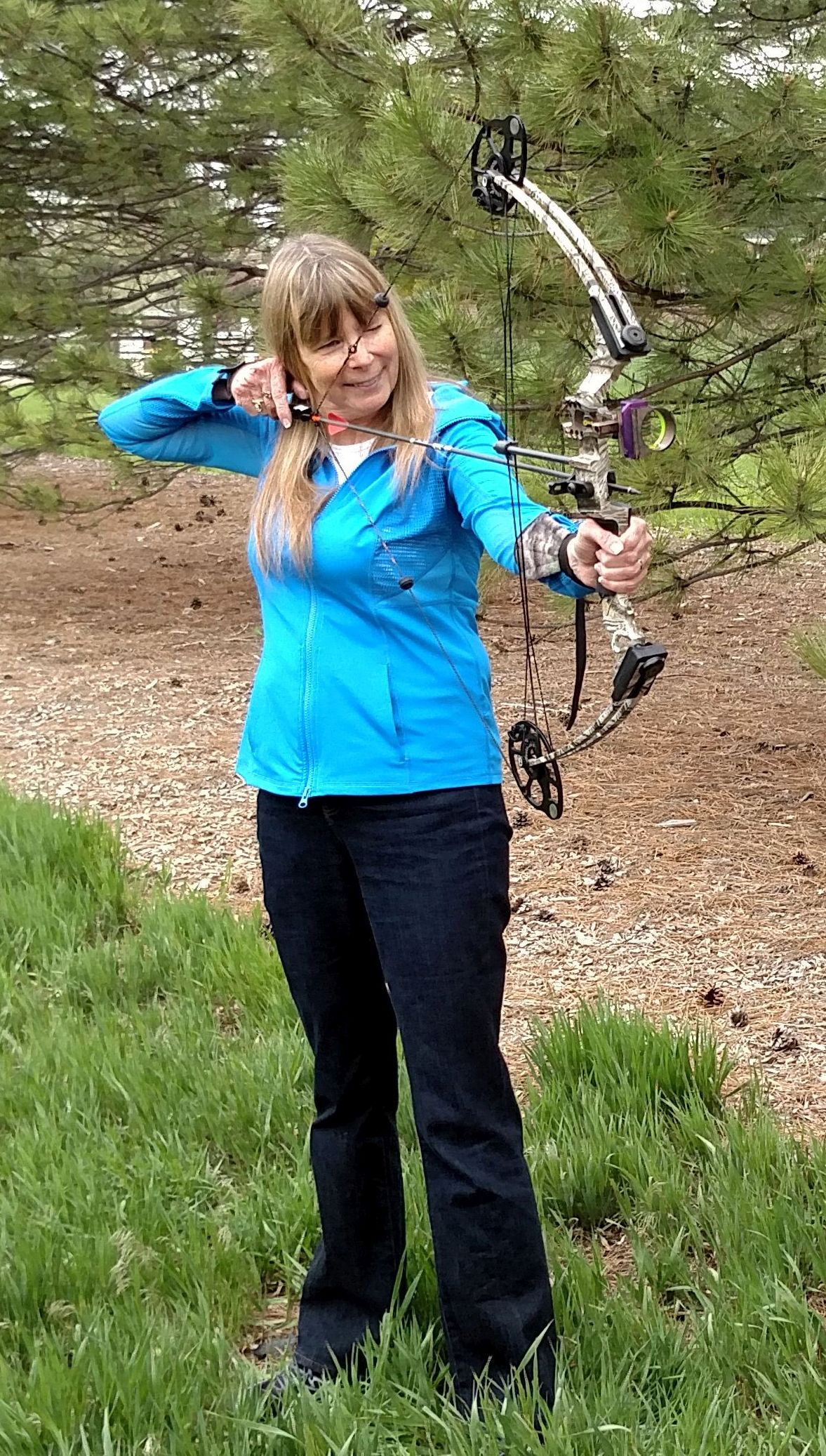
NIOSH recommends that dual hearing protection be used (an earplug and earmuff) in order to provide the maximum attenuation. This works well, when a combination of a passive and/or electronic devices are worn. The passive well-fit earplug can provide maximum attenuation and the electronic earmuff can be used to restore audibility and provide additional attenuation. Even two electronic HPD can be used if desired. The wearer should also be advised that anything that interferes with the seal of the hearing protector may negatively influence attenuation, so wearing eyeglass with earmuffs, and putting earmuffs over a hat or sweatshirt hood should be avoided.
For me, the best way to protect yourself is to shoot a bow and arrow rather than a recreational firearm.
References
Families Afield. (2010). An initiative for the future of hunting. Retrieved from https://familiesafield.org/pdf/FamiliesAfield_Report.pdf
Flamme, G.A., Stewart, M., Meinke, D., Lankford, J., & Rasmussen, P. (2011). Auditory risk to unprotected bystanders exposed to firearm noise. J Am Acad Audiol, 22(2), 93–103, doi: 10.3766/jaaa.22.2.4
Flamme, G.A., Wong, A., Liebe, K., & Lynd, J. (2009). Estimates of auditory risk from outdoor impulse noise II: Civilian firearms. Noise Health, 11(45), 231–242.
Hoffman, H.J., Dobie, R.A., Losconczy, K.G., Themann, C.L., & Flamme, G.A. (2016). Declining prevalence of hearing loss in US adults aged 20 to 69 years. JAMA Otolaryn-Head Neck Surg, Published online December 15, 2016. doi:10.1001/jamaoto.2016.3527
Lankford, J.E., Meinke, D.K., Flamme, G.A., Finan, D.S., Stewart, M., Tasko, S., & Murphy, W.J. (2016). Auditory risk of air rifles. Int J Aud, 55(S1), S51-S58.
Meinke, D.K., Finan, D.S., Soendergaard, J., Flamme, G.A., Murphy, W.J., Lankford, J.E., & Stewart, M. (2013). Impulse noise generated by starter pistols. Int J Aud, 52(S1), S9–S19.
Meinke, D.K., Murphy, W.J., Finan, D.S., Lankford, J.E., Flamme, G.A., Stewart, M.,...Jerome, T.W. (2014). Auditory risk estimates for youth target shooting. Int J Aud, 53(S1), S16-S25.
Murphy, W.J., Flamme, G.A., Finan, D.S., Zechmann, E.L., Lankford, J.E., Meinke, D.K.,...Stewart, M. (2012, October). Noise exposure profiles for small-caliber firearms from 1.5 to 6 meters. Paper presented at 164th Meeting of the Acoustical Society of America, Kansas City, MO.
Nondahl, D.M., Cruickshanks, K.J., Wiley, T.L., Klein, R., Klein, B.E., & Tweed, T.S. (2000). Recreational firearm use and hearing loss. Arch Fam Med, 9, 352—357.
Rasmussen, P., Flamme, G., Stewart, M, Meinke, D., & Lankford, J. (2009). Measuring recreational firearm noise. Sound and Vibration, 14-18.
Southwick Associates. (2013). Target shooting in America report. Produced for the National Shooting Sports Foundation. Retrieved from https://www.nssf.org/PDF/research/TargetShootingInAmericaReport.pdf
Addendum
In the article, Dr. Meinke referred to a group of researchers who are interested in recreational firearm noise, who call themselves the Rudyard Gang. The following, from Deanna, provides some background information regarding this group.
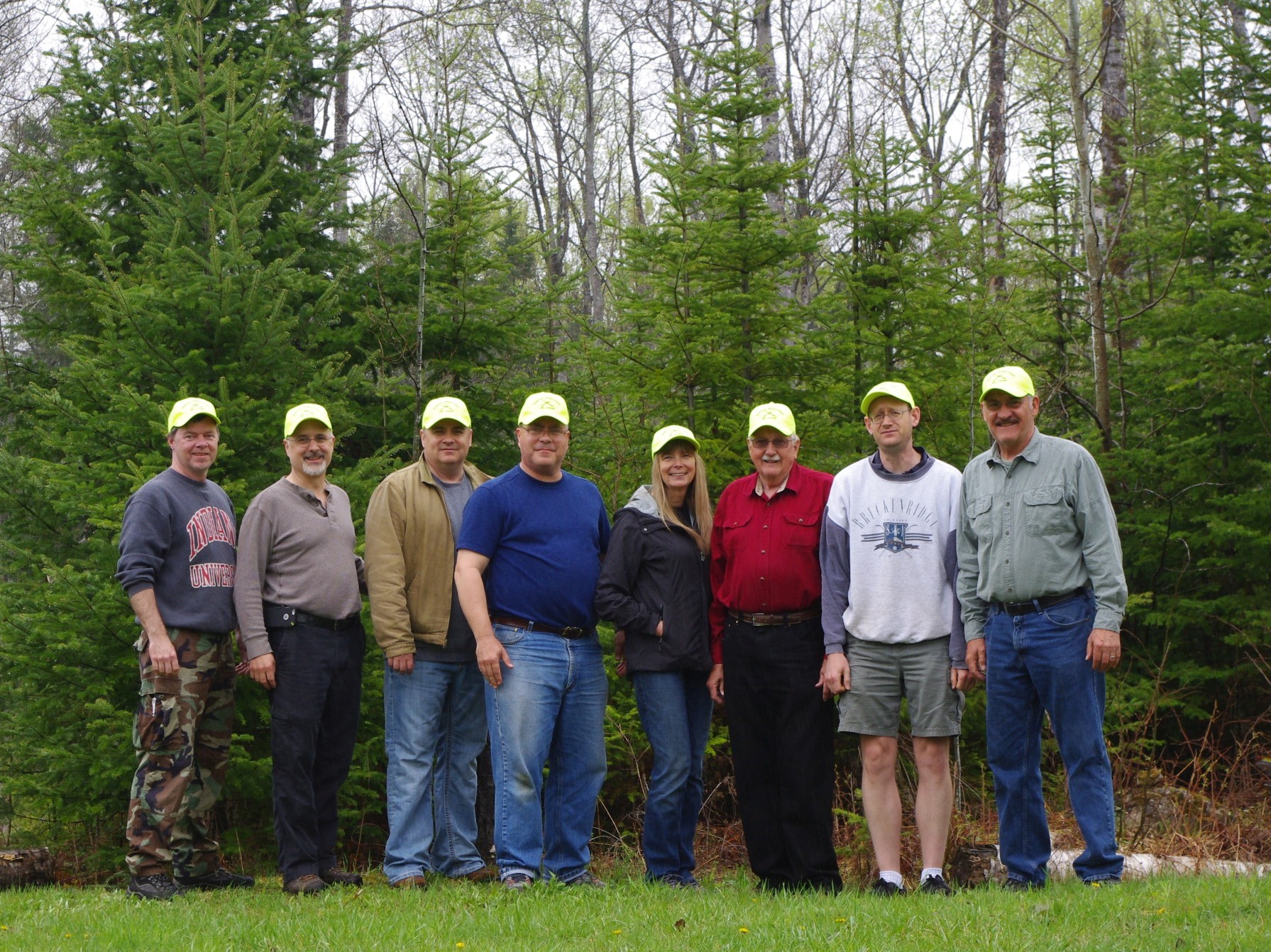
Rudyard Gang (Left to right): Don Finan, Greg Flamme, Steve Tasko, Bill Murphy, Deanna Meinke, James Lankford, Ed Zechmann and Mike Stewart.
The “gang” was formed over dinner at a National Hearing Conservation Association conference 10 years ago. We realized that each of us had an interest in recreational firearm noise from personal, professional and scientific perspectives. Most of the data on the topic were outdated and limited in scope and new technologies allowed for the application of advanced measurement technologies. The current team is comprised of Michael Stewart (Central Michigan University), James Lankford (Northern Illinois University), Greg Flamme and Stephen Tasko (Western Michigan University), William Murphy and Edward Zechmann (National Institute for Occupational Safety and Health), and Donald Finan and me (University of Northern Colorado). We head up to Mike Stewart's hunting camp in the Michigan UP near Rudyard, MI between the snow melt and the black fly hatch each May.
The photo below shows the microphone setup at Rudyard 2016 for a sound power study of recreational firearms.
Citation
Meinke, D. (2017, March). 20Q: A shot of prevention - hearing loss from recreational firearm noise. AudiologyOnline, Article 19626. Retrieved from www.audiologyonline.com

